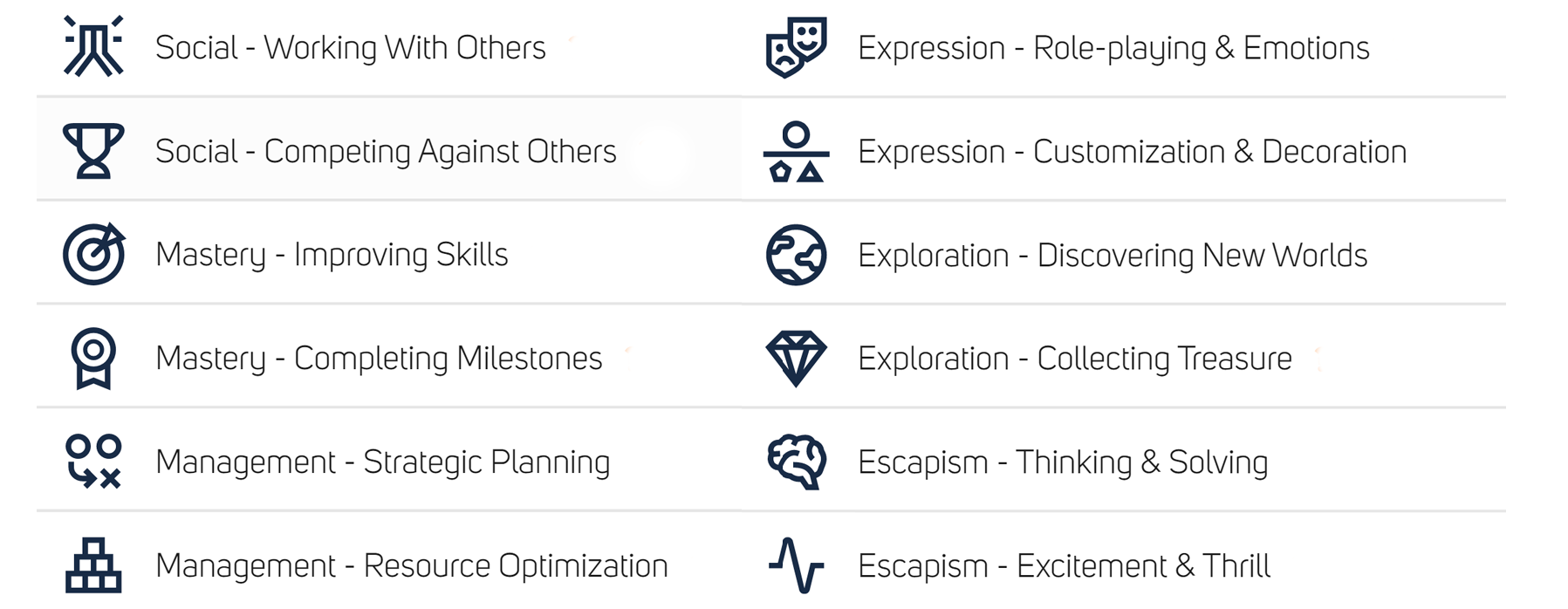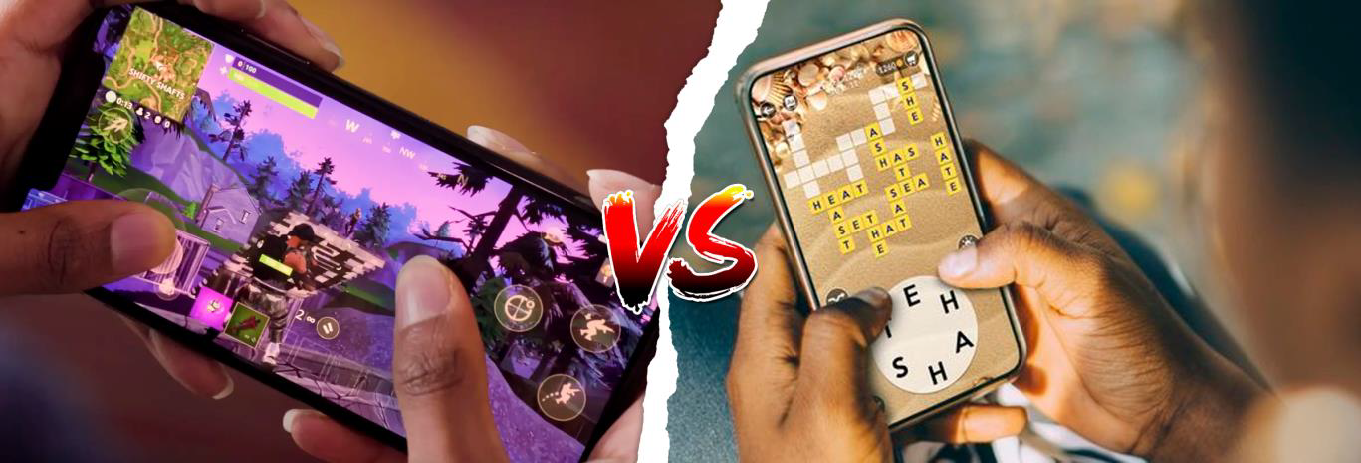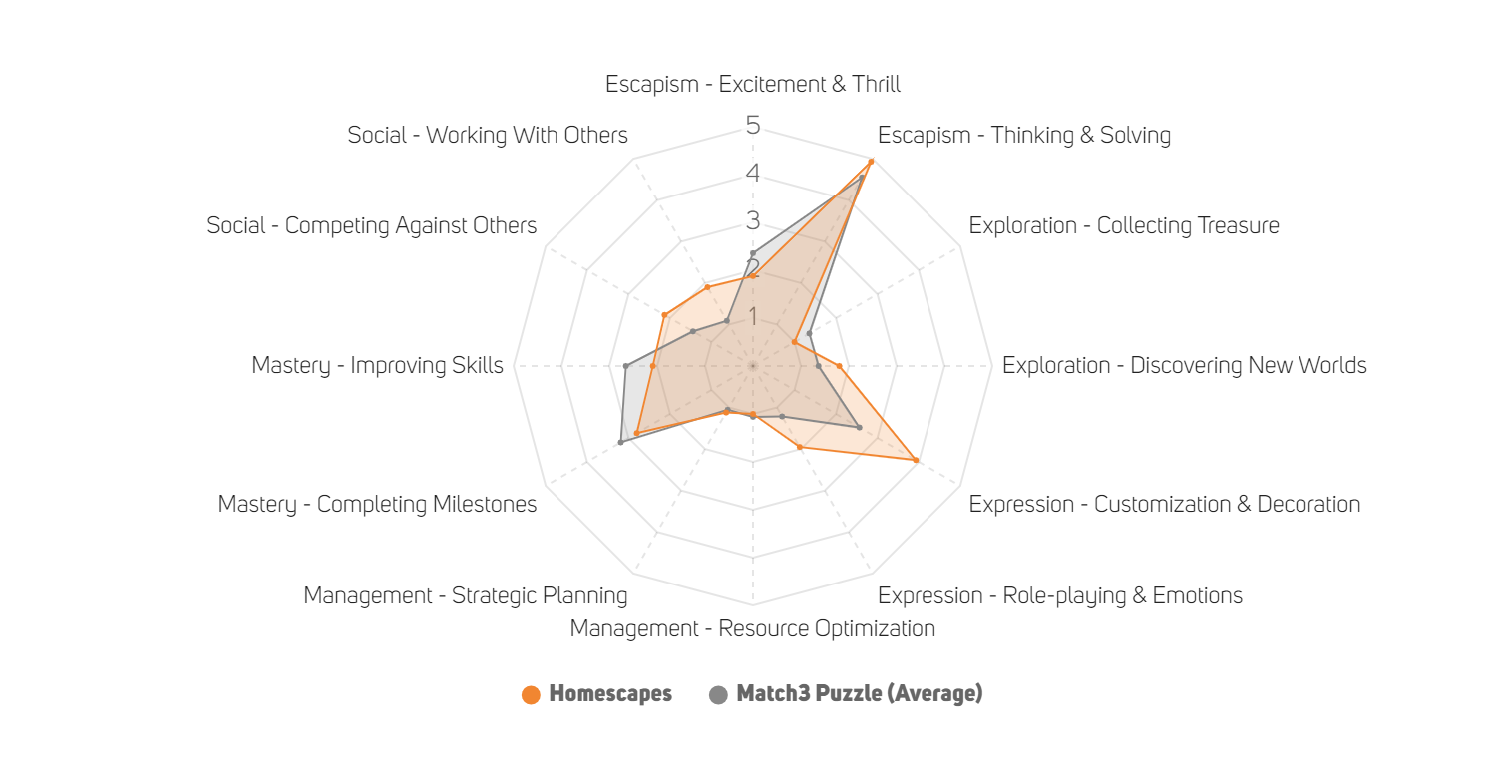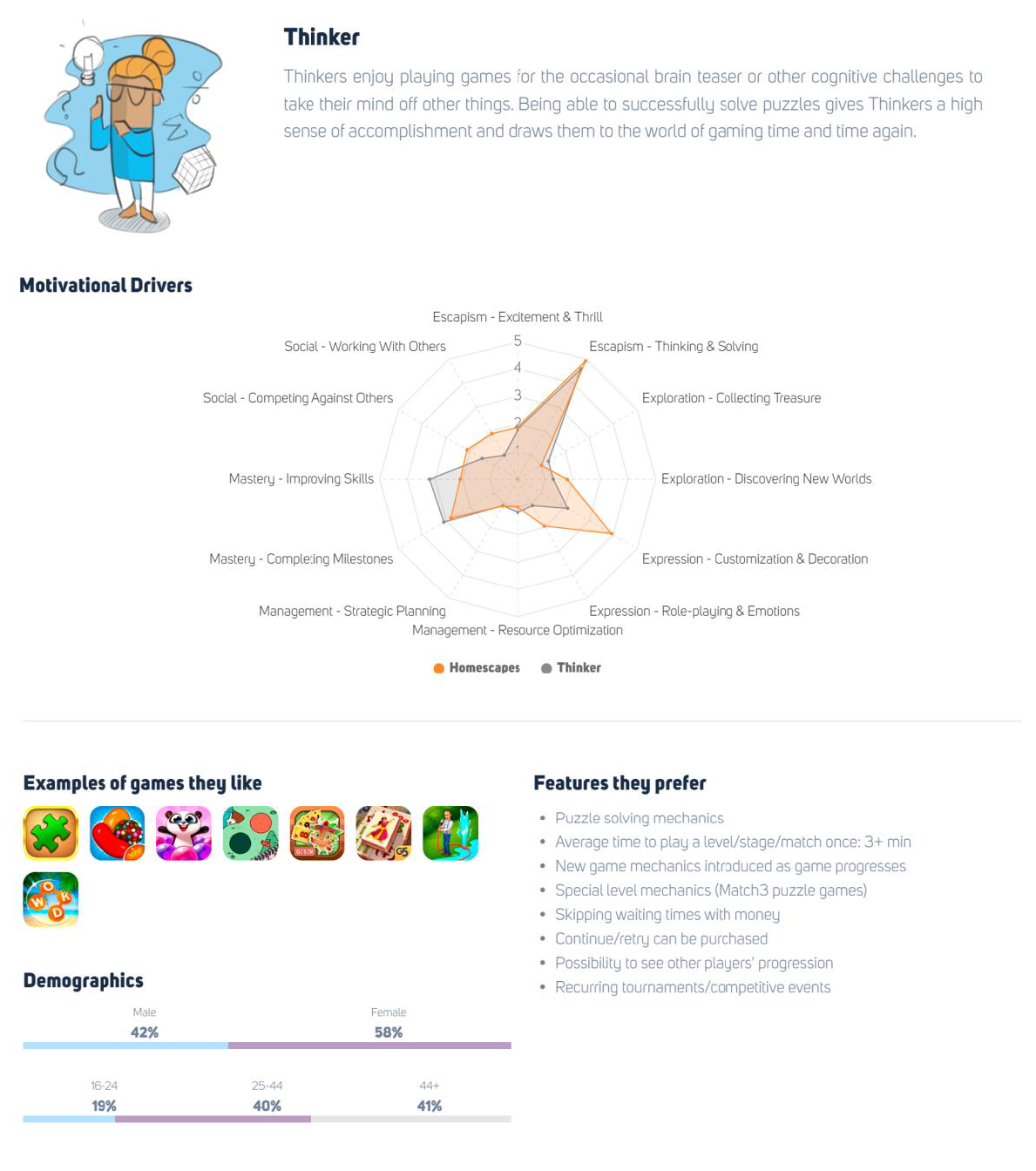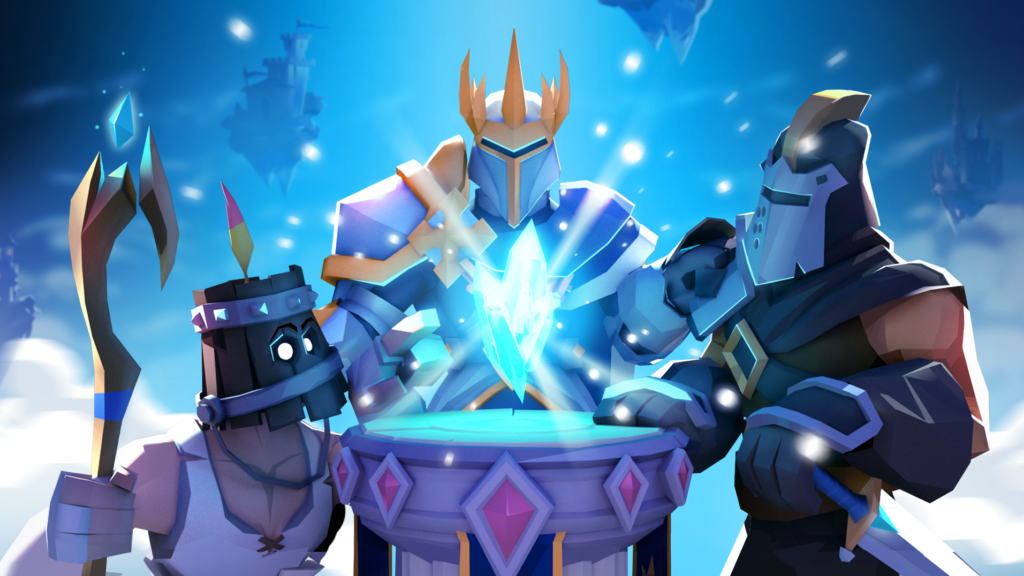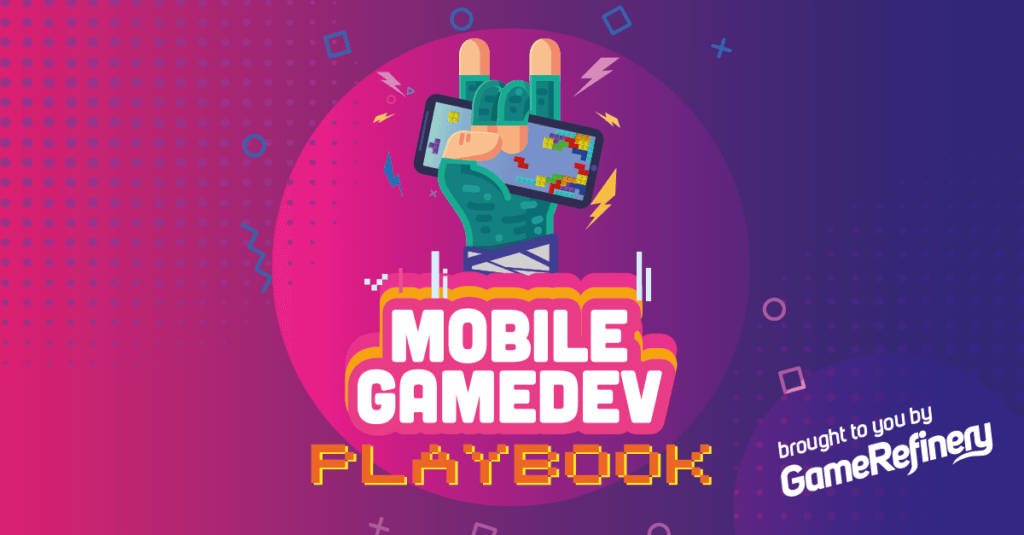When it comes to games and especially free to play mobile games, the competition for players’ attention and engagement is fierce. To find success in this crowded market, every developer and publisher has to grab players’ attention and keep them coming back – otherwise, their games will end up forgotten among the hundreds of thousands of other titles hibernating on appstore shelves. In other words, you must be able to deliver an experience that truly resonates with your player base – creating games that people want to play.
However, understanding your audience’s likes and dislikes, wants, and needs is not easy, and it takes time as well as resources to start mapping them. Surveys, polls, and open feedback channels are a good start in learning what motivates players to play your game. However, they are not easy to conduct properly; they usually eat up lots of resources and only give you insights about that one game – not the entire market.
As understanding player motivations is such an important piece of the “hit game jigsaw puzzle”, we at GameRefinery wanted to create a solution that would help developers and publishers get their hands on player motivation data at scale, giving a whole new framework to better understand what drives engagement across various player archetypes.
Editor’s Note: Want to see GameRefinery’s Player Motivations and Archetypes in action? Make sure to check out our quick overview video and this game overview page for Minecraft to see it in action! Our experts are also happy to sit down and tell you more.
Starting Point: Motivational Driver Framework
When we started planning our motivational data-set, we aimed to create as comprehensive and multifaceted of a view as possible without making it too complicated and hard to understand. In other words, we wanted to develop a framework that would be easy to internalize and would give our users actionable insights regarding player motivations. After a lot of planning, testing, studying, and survey research we ended up with our current Player Motivational Drivers:
Our current model consists of twelve different Motivational Drivers, each covering a separate player root motivation. We grouped these Motivational Drivers based on their nature to form meaningful pairs or “motivational groups” for example, improving skills and Completing Milestones fall under Mastery. No taxonomy or model can perfectly catch every single nuance of player motivations. Still, our approach has proven to be flexible, working on an individual games level and at scale to provide a macro-level view, proving an actionable and effective framework in this field.
Next Step: Motivation Profiles of all mobile games
Once we had completed the Motivational Driver framework and survey research ( around 10.000 respondents), we crunched through our game database linking game-related Motivational Driver data with our unique game features data. We then added some advanced data science and statistical modeling to the mix, resulting in Motivational Driver profiles for all mobile games in the AppStore.
With this modeling, we’re able to estimate with a high degree of accuracy which of the twelve Motivational Drivers any game in the market is catering to, in particular. For example, our data suggest that Fortnite caters to players who like to compete with others, enjoy excitement & the thrill of the fast-paced gameplay, and want to get better by improving skills. That emphasis is a match made in heaven for certain player types, but for those who are motivated by drivers such as thinking & solving, role-playing, or resource optimization, it might not be an optimal fit.
Battle Royale shooters and single-player word puzzlers are picked up for quite different motivations
In our current model, we use over 600 variables to map Motivational Driver profiles. This is done automatically to over 130 000 mobile games (actually looking forward to this soon covering 300.000+ mobile games). Combine this with our ample set of other research tools and views already available in the GameRefinery service, and you get mobile games market data and motivational insights on a scale never seen before. For example, once we have fully brought motivational data into our service, you will be able to see
- which features affect different Motivational Drivers
- how the market share of games that are strong in certain Motivational Drivers is developing (“market share for motivations”)
- how Motivational Drivers differ across different subgenres and game types
- facts on if a given game is stronger / weaker in chosen Motivational Drivers vs. sub-genre average
- and much more!
Homescapes Scores higher on several different Motivational Drivers
From Motivational Drivers to Player Archetypes
After creating the Motivational Driver framework and models, we wanted to take things a bit further. By doing some further research combined with statistical modeling (=statistical clustering methods), we found Motivational Driver combinations that were popping up frequently in our game database. For example, Motivational Drivers “Thrill & Excitement” and “Improving skills” were frequently getting high values in FPS games with lots of PvP and reaction-based core gameplay.
These combinations lead us to create eight different “Player Archetypes” that help in understanding the archetypical player personas your game appeals to and the Motivational Drivers catering to them. In essence, each Player Archetype has a set of Motivational Drivers that resonate exceptionally well with them.
Here’s our current framework of eight distinctive Player Archetypes:
Just like the Motivational Driver framework introduced earlier, this Player Archetype mapping is just one way to depict the vast, highly nuanced entity of player personas.
Homescapes manages to tickle the Thinker archetype’s primary motivations very nicely. Moreover, the customization & decoration elements of the game match well with the Expressionist’s (another player archetype) motivational framework.
However, as our approach is based on a robust set of data, it’s something that we believe manages to tackle the subject rather nicely without being overly complex and hard to grasp.
So, to sum up, our approach to player motivations is built on two intertwined cornerstones – Motivational Drivers and Player Archetypes. This two-fold approach is really powerful, as it doesn’t only shed light on isolated motivations themselves, but links them to player persona types for a more comprehensive view on the matter.
Using Motivational Drivers and Player Archetypes to Your Advantage
So we’ve described our framework for player motivations and archetypes along with the high-level methodology behind them, but the key question remains. How does all this unique data help you in making better decisions in mobile game development?
First, having access to player motivations data gives you a whole new understanding of why your players come back (or don’t) and engage with your game, i.e. what are the key drivers of why they play in the first place.
Second, as we’re able to link individual game features (e.g., synchronous PvP, guilds, or collectible albums) to Motivational Drivers and Player Archetypes, you get to know which features resonate with your player base’s motivations particularly well. This is precious information in various stages of game development and live ops and something you weren’t able to get before.
Third, combined with our market research tools, you can gain insights on which player types and demographics drive most revenues or downloads across various geographical markets. Combined with our comprehensive genre taxonomy, you can efficiently map the most lucrative game genres and their trends. This, in turn, helps in making the right kind of games for the right audiences.
Want to learn more about player motivation and archetypes? Book a session with our team here and see the data in action.
Player Motivations & Archetypes FAQ
How did you come up with these motivations?
When we started planning our motivational data-set, we aimed to create as comprehensive and multifaceted of a view as possible without making it too complicated and hard to understand. In other words, we wanted to create a framework that would be easy to internalize and would give our users actionable insights regarding player motivations in the mobile game space. After a lot of planning, testing, studying, and survey research, we ended up with our current set of motivations. So it was a combination of qualitative research combined with quantitative data analysis.
Why 12 motivations, why not more or less?
Twelve motivations seem to have a good balance between enough detail and, at the same time, not being too general. For example, we felt that social interaction related motivations should have more than one motivation type to capture different angles of social interaction – working together as well as competing against others. Twelve motivations is a choice also supported by data: it gives enough variation between games, but on the other hand, it’s not too granular, so we can have a lot of games scoring high on at least one motivation class.
The motivations have some similarities with some other studies I have seen (e.g., Quantic Foundry). Why not just use an existing motivation model?
Yes, there is a lot of excellent work published around the topic – both commercial and academic. As we are providing this as part of a commercial service, we didn’t want to copy the same methods and approaches directly for IPR reasons. The other reason is that most of the other approaches are not tailored specifically for mobile games but study player behavior in general, also including PC and console games. We feel that mobile games are a special case and have earned their own, tailored approach.
Where was the research conducted and how many respondents were there? How representative is the sample?
We surveyed around 10 000 respondents. The survey targeted mobile game players in English-speaking Western countries (US, UK, Canada, New Zeland, and Australia). The sample is representative of smartphone users when it comes to age, gender, income, and household size. We are constantly updating the survey to keep the data up to date and to make the database more robust.
What methods did you use to find the archetypes/segments?
We have formed the player segments/archetypes based on the motivations. For example, “Networker” players like mobile games where there are both cooperative as well as competitive elements strongly present. We used statistical clustering methods in finding these players that share similar motivations.
Why 8 player archetypes, why not more or less?
Eight archetypes have a good balance of having enough players in all archetypes but, at the same time, have enough granularity to see clear differences between different segments. We tested variations with 4, 6, and 10 archetypes with actual data, but 8 turned out to be the best one.
In which sections of the service can I see motivations and player archetypes?
We’re bringing motivations and player archetypes to different sections of our service, starting from game overview pages and the game comparison tool. After that, the plan is to bring them to market explorer to give you the tools to slice and dice the data and correlate motivations and archetypes with other data we currently provide (features, demographics, revenue, sub-genres, etc.). We already offer the data via API / metadata master database where the motivation and player archetype data is attached to each of the games as additional variables.
How many games have this information in your service?
We have the motivational data for all published games in the service.
Related reading:
How player motivations & archetypes can help you with your key audiences


